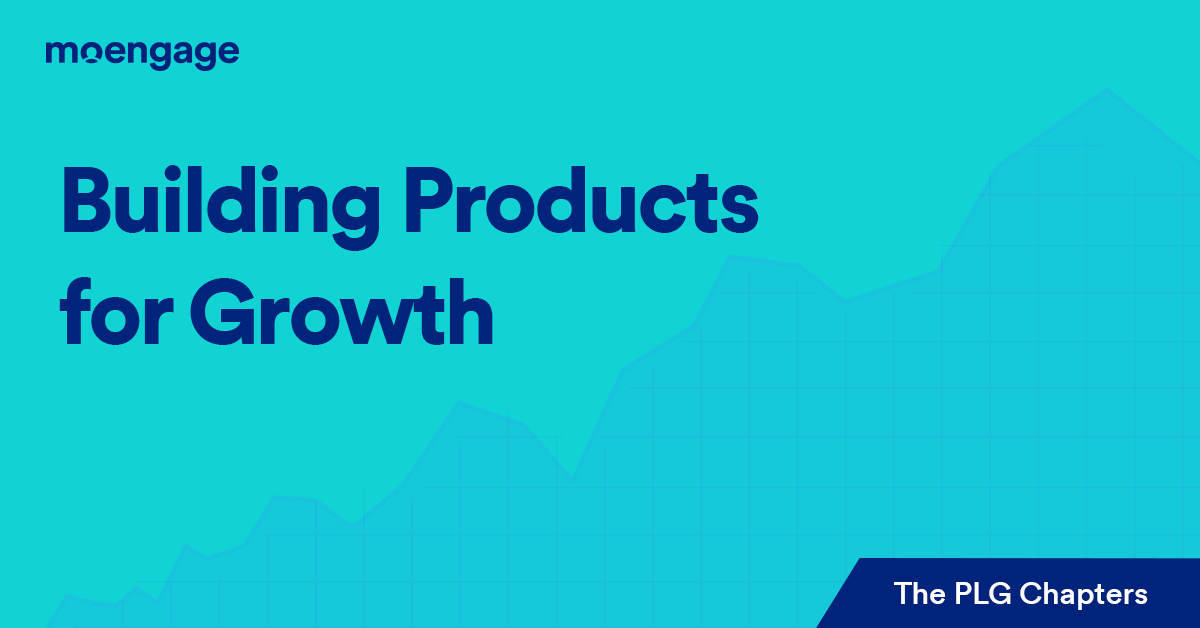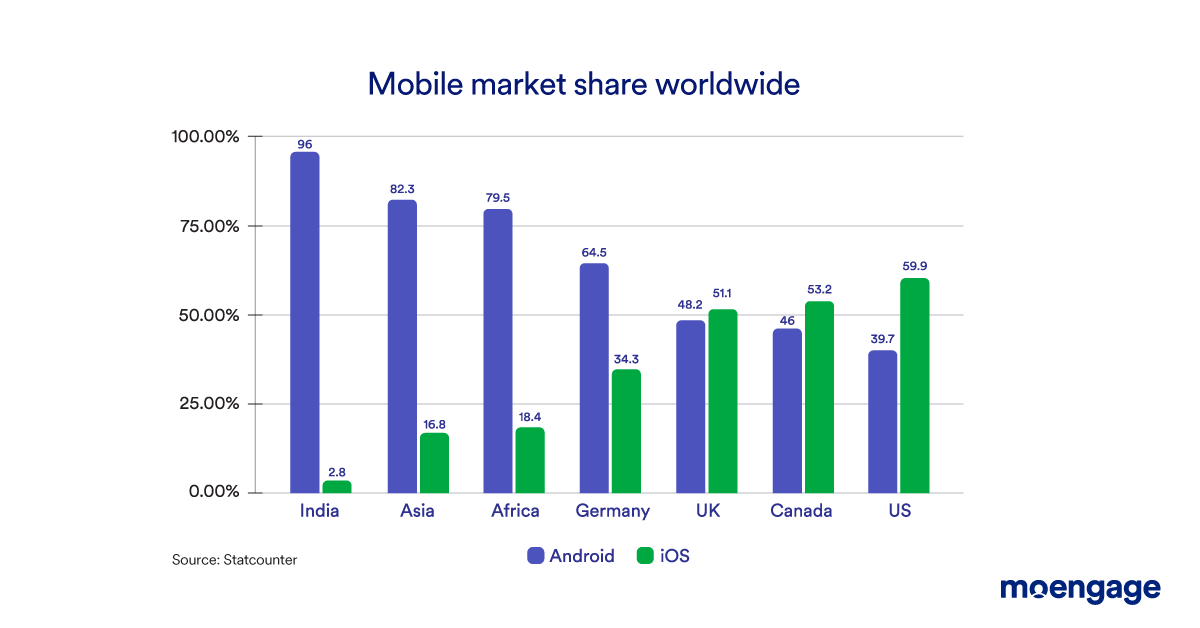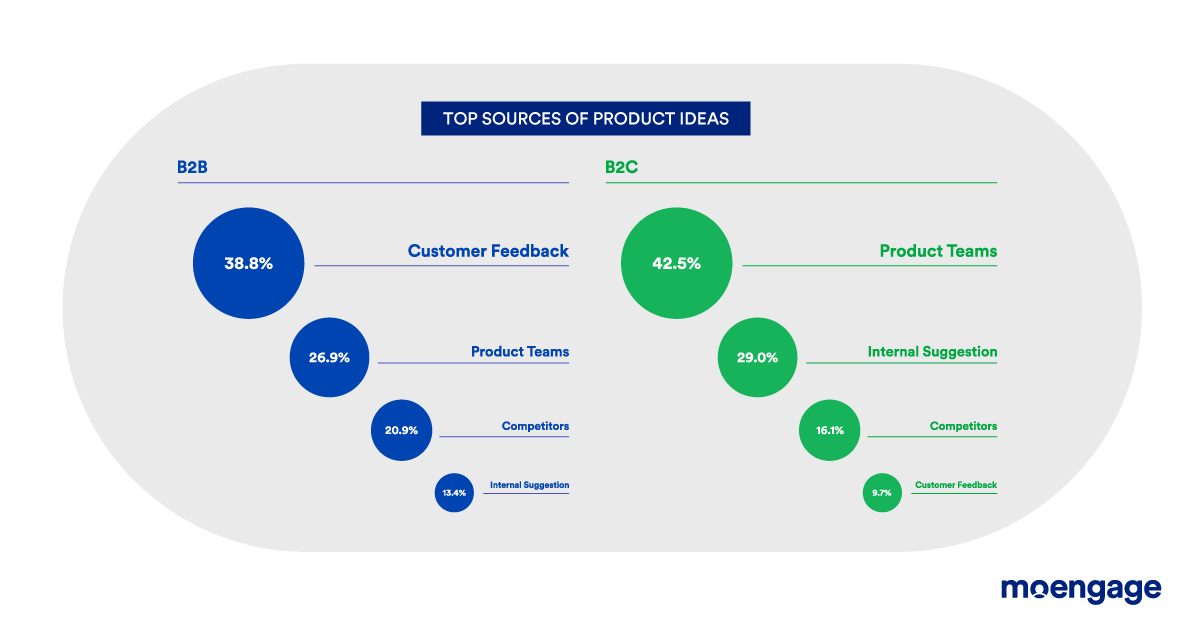Building Products for Growth | The PLG Chapters

Reading Time: 5 minutes
From Amazon to Netflix and Tesla, every consumer brand in the world is adopting a product-led growth strategy. The success stories of these brands prove that a good product does not need to be sold — it can sell itself. Product-led growth (PLG) can take a business from zero to one million daily active users (DAUs) faster than any other strategy, helping brands conquer goals that were earlier considered difficult to achieve. In this blog series, we take a look at insights from industry legends in PLG, starting with the most basic question: how do you build products for growth?
To answer this, we need to break that question down into the following:
- Understanding the market: How to build products for the East vs. West
- Understanding your customer: How to build products for B2B vs. B2C
- Scripting a product vision, strategy, and roadmap
- Communicating product growth to a business leader
- Driving collaboration between product, business, and marketing
Building Products for the West vs. East
In the West, Apple dominates the gadget industry, holding almost 60% market share in countries such as the US. As a result, most apps are first built and launched for iOS. On the other hand, customers in the East prefer Android. This platform dominates the market, with a 96% market share in countries like India. Consequently, Android app development gets preference over iOS here.

For these reasons, mobile app development differs significantly between the West and the East. It is not possible to replicate the same app-building processes across iOS and Android. Each platform has a unique ecosystem and development process. App developers, product marketers, and UX designers have much to learn, unlearn and relearn to satisfy both customer segments.
Building mobile apps for Bharti Airtel taught us that Android and iOS have contrasting processes that require extensive learning, unlearning, and relearning.
– Anand C
EVP, Product Management, Five9
Building Products for B2B vs. B2C
Until recently, B2B and B2C were treated as entirely different markets. Building products for them required different levels of expertise, tools, and domain knowledge. B2B was considered to be a sophisticated space where customer demands and business objectives were extremely fragmented and difficult to forecast or satisfy.
B2C, on the other hand, posed challenges in terms of scale and retention — how do you build for an audience of millions? How do you make them stay on your app when there are so many alternatives and the cost of switching is low? Even the source of product ideas differed between B2B and B2C:

The present generation of B2B apps, however, like Slack, Zoom, Google Calendar, etc. script a different story. These apps inherit a lot of B2C instincts, and yet, manage to keep most of their B2B customers happy.
The border demarcating B2B and B2C product development has blurred to the extent that it might vanish altogether. Today, it is possible to create a B2B product using the same insights and decisions as that of a B2C product. Even product development cycles for B2B are shortening because cloud infrastructure is readily available.
Scripting a Product Vision, Strategy, and Roadmap
Building a successful product and company is like producing a movie. You have a script and a vision first, followed by filming. Then, you sell tickets.
– Keith Rabois
General Partner, Founders Fund
Customers today have high expectations from the products they spend money on. Products need a strong value proposition that goes beyond solving a common problem. They must help customers save time and/or money or do something better. Business leaders need to take this into account before scripting the product vision, strategy, or roadmap.
For any customer, a product becomes valuable only when it starts yielding expected results. Depending on the target group, these could vary — simplifying a complex activity, making a process frictionless, augmenting the productivity of a team, etc.
Even the measurement of success is vastly different for products in different industries. A metric that serves one product may not serve another. For example, the success of an audio streaming app such as Spotify can be measured more accurately with ‘audio playback time’ than with ‘time spent on the app’.
Communicating Product Growth to a Business Leader
Most business leaders and A-level executives are only interested in two things:
- Will this earn money?
- Will this save money?
Many of the activities that product and growth teams pursue, however, may not directly lead to revenue generation or cost savings. As a result, most product and growth teams are apprehensive about reporting progress, initiatives or activities to senior management.
It is necessary to understand and communicate to business leaders that these are allied activities that will have a ripple effect — and eventually result in revenue generation. Here’s what you need to keep in mind to get better at reporting to business leaders:
- Get one percent better every day, be it at the job, a product metric or your skillset. This will reflect directly in your results.
- Understand how they consume information. Some leaders are fine with getting an email every week. Others may prefer a monthly drill-down into the details of every decision and its impact. Find out your leaders’ preferred style and deliver your updates accordingly.
Ultimately, if the product is doing well, senior management will get interested and ask the right questions, and prioritize your initiatives in overall product development.
Driving Collaboration Between Product, Business, and Marketing
One of the most effective ways to drive collaboration between product, business and marketing is to reduce the number of decisions, especially the ones that need to be made on a recurring basis. Any situation that involves multiple decisions requiring the opinions and support of many stakeholders leads to unpredictability and disagreement.

In a product development scenario, it is necessary to make veto rights transparent between product and marketing. There must be a clear distinction as to who owns what. This will help align goals and set the right expectations.
Conclusion
Product-led growth cannot be implemented overnight. It is a set of practices that must flow across organizational levels. PLG stakeholders must keep these practices in mind while making product decisions.
This blog is the first of a larger series, ‘The PLG Chapters’, which takes a look at product-led growth strategies implemented by winning consumer brands such as Samsung, OLX, Decathlon, Byju’s, Flipkart, and more. If you’d like to read it all in one go, you can go here. If not, stay tuned for the next edition of ‘The PLG Chapters’!















